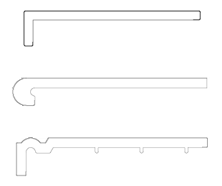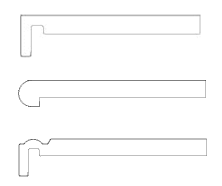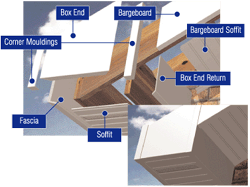| Choose
the right Fascia |
|
9mm |
16mm |
 |
 |
9mm Fascia Board 16mm Fascia Board Fixing
|
|
|||||||||||||||||||||||||||||||
Jointing
Gable Box Ends
Box ends can be formed in a number of ways as single or jointed assemblies as dictated by site parameters.
|
